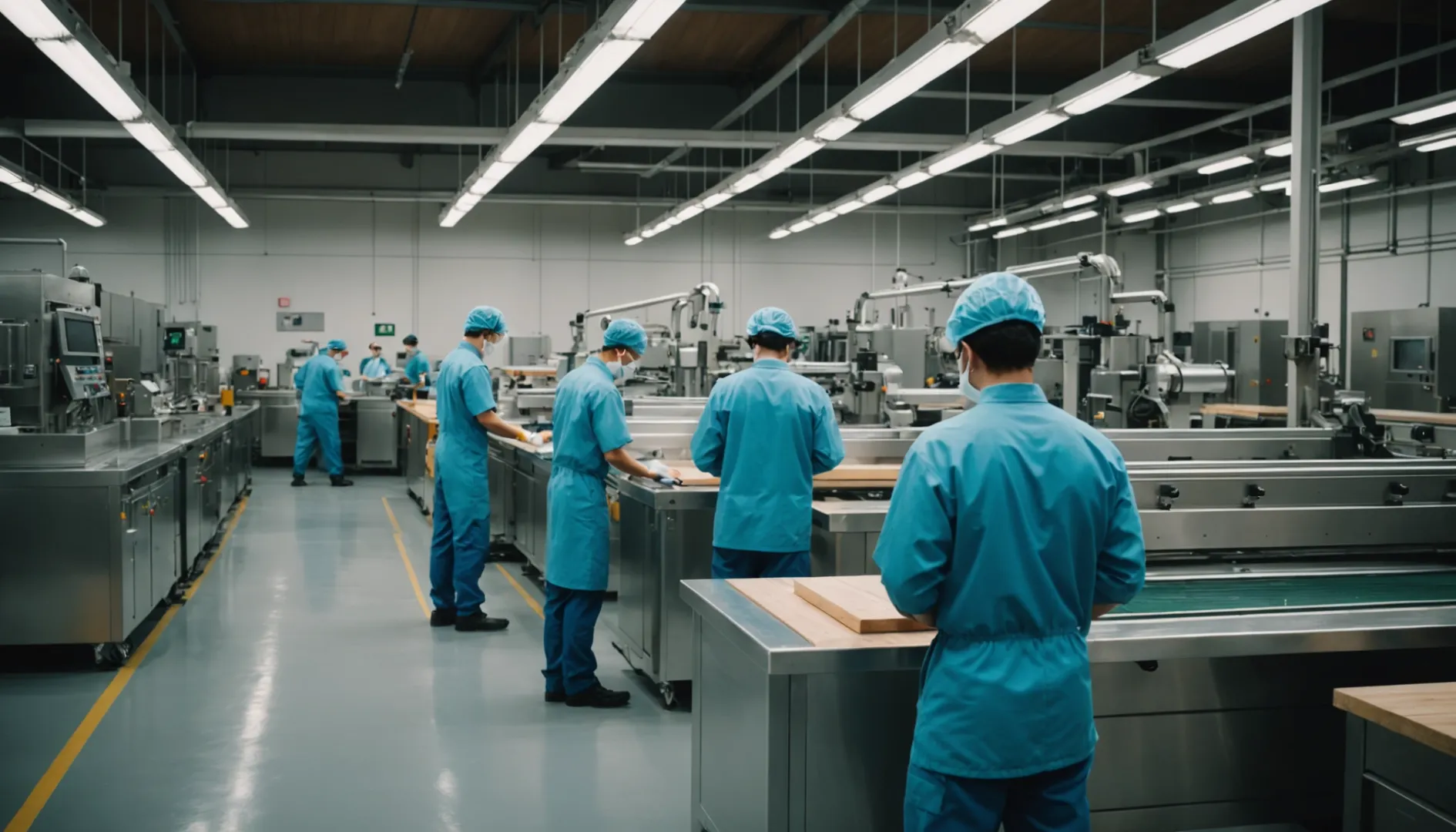
Ever wondered how your eco-friendly wooden cutlery is made safe for use? Dive into the fascinating world of sustainable production.
Health and safety standards in disposable wooden cutlery production are maintained through sustainable sourcing, rigorous quality control, adherence to hygiene protocols, regular sanitation audits, and compliance with international food safety regulations.
When I first explored the world of eco-friendly dining options, I was amazed by the meticulous process behind making something as simple as a wooden fork or knife. It's not just about chopping wood and shaping it; it's a complex dance of ensuring every step respects both the planet and our health. From choosing wood from sustainably managed forests to rigorous quality checks, each piece of cutlery tells a story of careful consideration. Understanding these measures helps me appreciate the dedication to both consumer safety and environmental responsibility. And honestly, it makes my meals feel a bit more meaningful.
Wooden cutlery must be free from heavy metals.True
Certifications ensure wood is free from contaminants like heavy metals.
FDA regulates disposable wooden cutlery standards.True
FDA sets food safety standards for materials and processes.
What Are the Key Practices in Raw Material Sourcing?
Ever wondered what makes the world of raw material sourcing tick? It’s not just about numbers and contracts—it's about relationships, responsibility, and resilience.
To excel in raw material sourcing, I focus on sustainable practices, strict quality checks, and nurturing supplier partnerships. These elements are essential for ensuring eco-friendly, cost-effective, and reliable production processes.
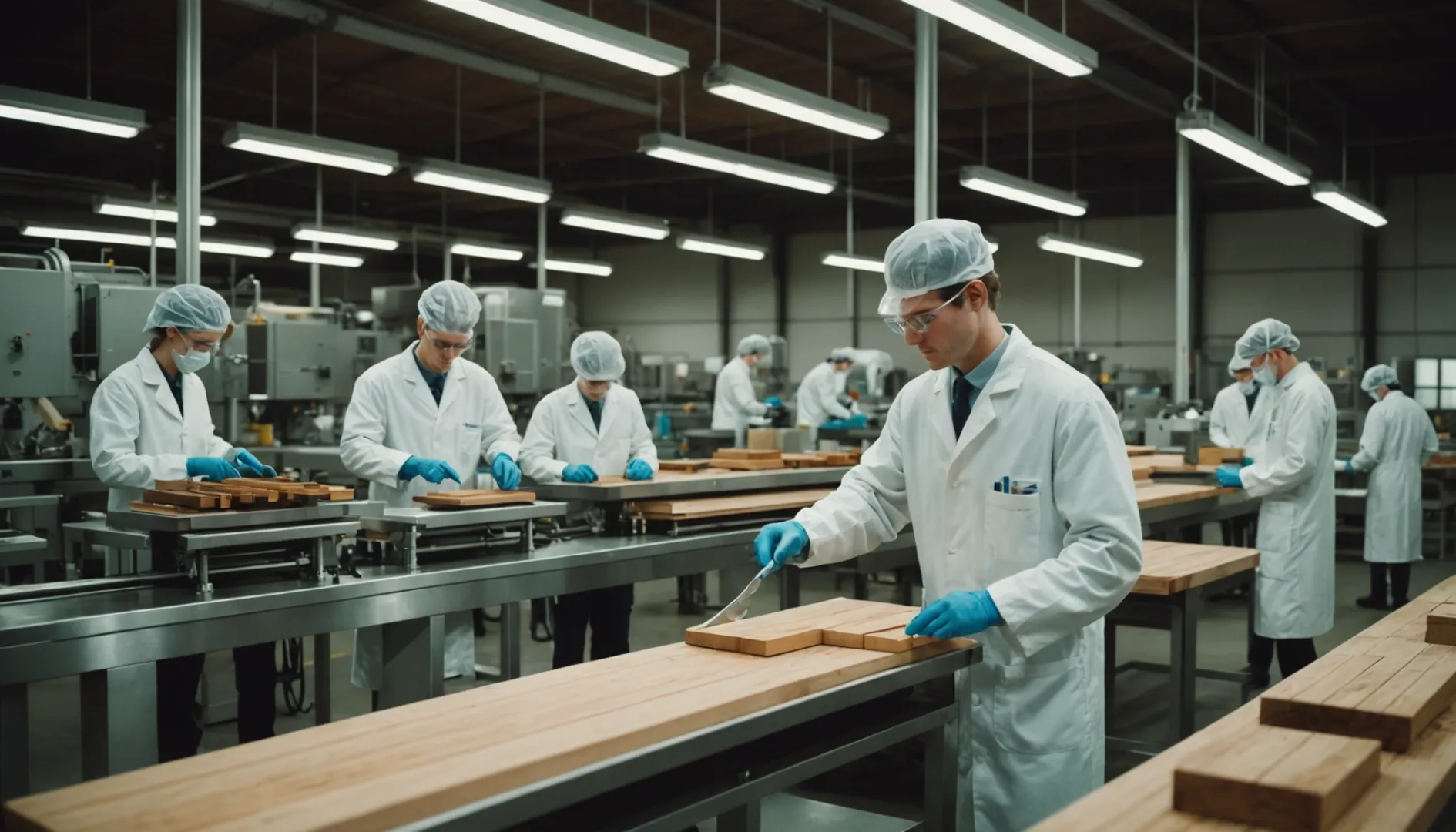
Sustainable Sourcing Practices
One pivotal lesson was the importance of sustainable procurement. I started seeking suppliers committed to environmental stewardship. Imagine sourcing wood from certified forests1 where every tree cut is replaced or replenished. This not only helps preserve biodiversity but also allows me to sleep better at night knowing I'm making a positive impact.
Rigorous Quality Control
Another key practice I learned was rigorous quality control. Once, I had a batch of materials rejected because they didn’t meet our stringent standards—lesson learned! Now, I ensure that every supplier provides compliance certifications2. This guarantees our products are free from contaminants like pesticides or heavy metals, protecting our brand's reputation.
Building Strong Supplier Relationships
Building strong relationships with suppliers has been invaluable. Open communication has often led to better terms and a more reliable supply chain. I'll never forget when a trusted supplier went out of their way to help us during a supply chain disruption3, all because of the rapport we had built.
Leveraging Technology for Efficiency
Technology has been a game-changer in my sourcing practices. I use supply chain management software to track inventory levels in real-time. This tech-savvy approach helps us make informed decisions, boosting procurement efficiency4 and cutting down on waste.
Ethical Considerations in Sourcing
Finally, ethical sourcing is close to my heart. I ensure our materials are obtained through fair labor practices, often partnering with suppliers involved in fair trade initiatives5. Supporting such initiatives not only builds consumer trust but also aligns with my values of fairness and equity.
Sustainable wood sourcing minimizes environmental impact.True
Sustainable sourcing ensures ecological balance and product safety.
Wooden cutlery production ignores hygiene protocols.False
Strict hygiene standards are followed to prevent contamination.
How Do Manufacturers Ensure Safety in Their Processes?
Have you ever wondered how manufacturers keep safety at the forefront while creating everyday products?
Manufacturing processes prioritize safety by adhering to stringent standards and practices, such as sourcing non-toxic materials, following strict hygiene protocols, and complying with regulatory guidelines.
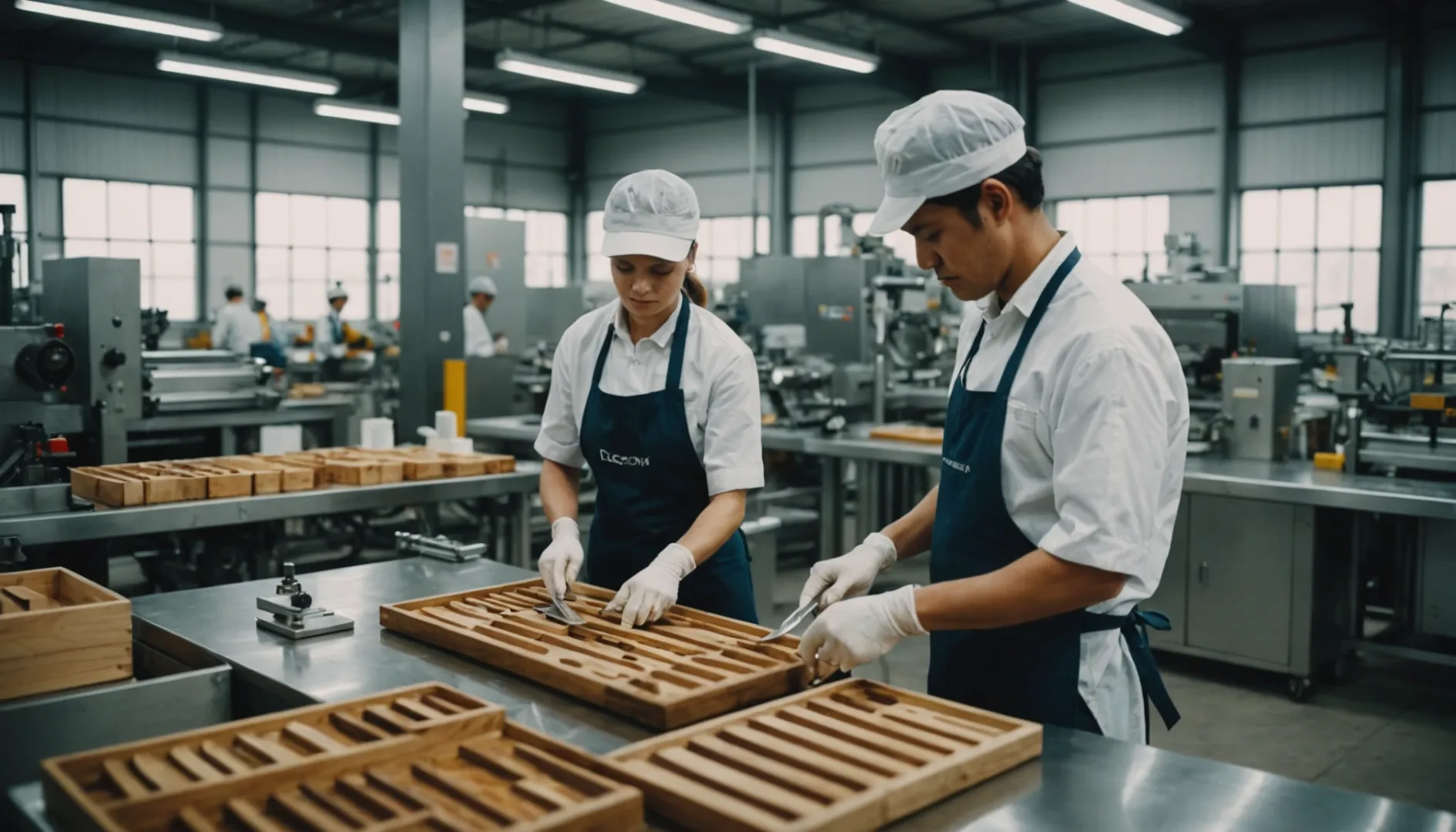
Safe Material Sourcing
Imagine you’re shopping for a wooden toy for your child. You’d want assurance that it’s made from materials safe enough for them to chew on, right? That’s where safe material sourcing comes in. Manufacturers go the extra mile to ensure raw materials are free from harmful substances. They lean on certifications to guarantee materials like wood or metals are clear of contaminants such as pesticides or heavy metals. This step is especially critical in industries like food production or children's toys, where consumer contact is direct and frequent.
Take, for instance, sustainable sourcing practices6. These are not just about environmental consciousness but also about ensuring product safety. Think about it—the wood used for disposable cutlery or even a small wooden spoon should be devoid of any harmful chemicals.
Strict Hygiene Protocols
Reflecting on my time working in a production facility, I vividly remember the emphasis on cleanliness. Maintaining hygiene wasn’t just a protocol—it was a culture. Facilities adhere to strict hygiene measures to prevent contamination. This includes regular cleaning schedules and diligent employee hygiene training.
Equipment sanitation was a routine part of our day. Some materials underwent additional processes like drying or sterilization to eliminate pathogens, ensuring they were safe for use, especially in food-contact products.
Regular Safety Audits
I recall the first time I experienced a safety audit—it felt intense but reassuring. Audits are crucial for maintaining manufacturing safety standards. Health authorities conduct these regularly to ensure compliance with established safety regulations, covering everything from how raw materials are handled to how finished products are stored.
Implementing regular audits7 helps identify potential hazards, ensuring that manufacturing facilities continuously enhance their safety measures.
Compliance with Health Regulations
For any manufacturer, adhering to health regulations is not just a requirement—it’s a commitment. Products must comply with food safety standards set by regulatory bodies like the FDA or equivalent organizations worldwide. These regulations determine acceptable materials, manufacturing processes, and labeling requirements.
Many manufacturers strive for certifications from recognized health organizations as a testament to their dedication to high safety standards. Achieving certifications like ISO8 showcases a manufacturer’s commitment to maintaining stringent health and safety protocols throughout their production processes.
Sustainable wood sourcing ensures product safety.True
Sustainable sourcing minimizes harmful chemicals, ensuring safer products.
Regular audits are not required for cutlery production.False
Audits ensure compliance with health and safety standards.
Why Are Sanitation Protocols Essential in Production?
Ever wondered why sanitation protocols are the unsung heroes of production?
Sanitation protocols are crucial in production as they prevent contamination, ensure product safety, and meet health regulations. They involve regular audits, employee training, and strict hygiene standards, effectively minimizing risks associated with manufacturing processes.
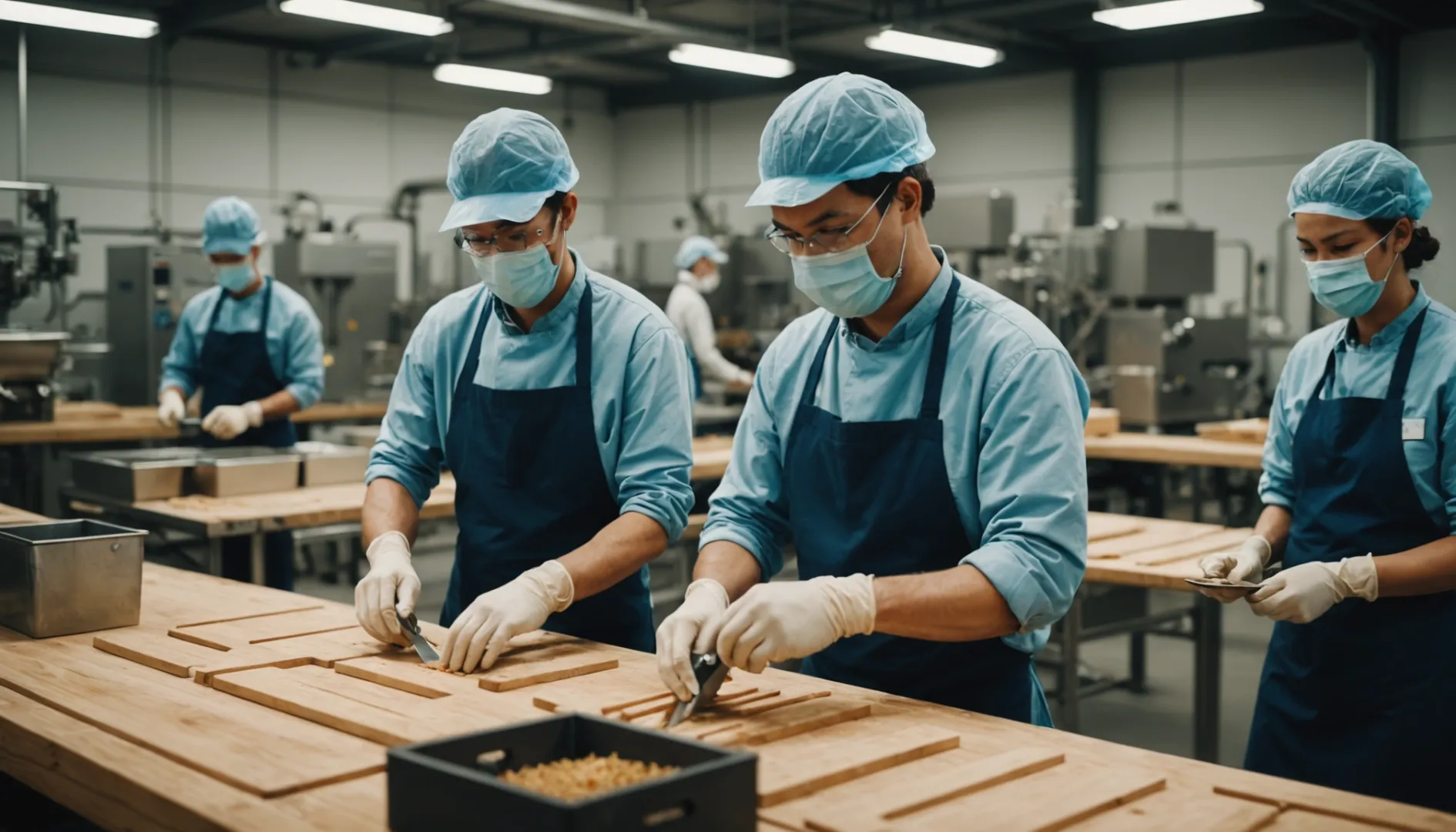
Importance of Sanitation Protocols
I remember the first time I stepped into a production facility—it was a whirlwind of activity and noise. But amidst all the chaos, one thing stood out: the meticulous sanitation protocols. These weren't just rules; they were the heartbeat of the operation. Sanitation protocols form the backbone of maintaining hygiene in any production setting. Imagine them as a safety net, preventing contamination risks that could otherwise spell disaster, especially in industries like food manufacturing. These protocols mandate routine cleaning and sterilization of equipment, thereby enhancing product safety9.
Ensuring Compliance with Regulations
I once attended a seminar where an industry veteran shared horror stories of what can happen when regulations aren't met. It was an eye-opener! Regulatory bodies like the FDA set stringent standards to ensure consumer safety. Sanitation protocols are our blueprint for meeting these standards through regular audits and certifications. Compliance doesn’t just assure safety; it builds consumer trust and opens up market opportunities10. It's reassuring to know that by adhering to these protocols, we're not just following rules—we're safeguarding our brand's reputation.
Employee Training and Awareness
Training is like a rite of passage in our facility. I remember going through my first session, learning how every small action contributes to maintaining high standards. Training programs play a critical role in implementing sanitation protocols effectively. Employees learn about proper hygiene practices, reducing human error and contamination risks. Continuous education ensures that staff stay vigilant and informed about best practices11 in sanitation, keeping us all on our toes.
Impact on Production Efficiency
Efficiency is the name of the game, and I've seen firsthand how effective sanitation protocols can improve it. By adopting rigorous cleaning schedules, facilities minimize downtime caused by contamination issues. This approach not only maximizes profitability but also ensures resources are used optimally—thereby maximizing profitability12. It's a win-win situation where product safety and production efficiency go hand in hand, creating a seamless operation that runs like a well-oiled machine.
Sustainable sourcing ensures product safety.True
Sourcing wood from sustainably managed forests ensures materials are free from harmful chemicals, enhancing product safety.
Employee training is not required for hygiene.False
Training workers in food safety practices is crucial to minimize contamination risks and maintain product safety.
Which Certifications Are Essential for Compliance?
When I first ventured into the world of compliance, I was overwhelmed by the array of certifications available. Here's how I figured out which ones were truly essential.
Essential certifications for compliance, like ISO 9001 for quality management, ISO 14001 for environmental management, and FDA's food safety certification, are vital. These ensure adherence to industry standards, boosting trust and accountability.
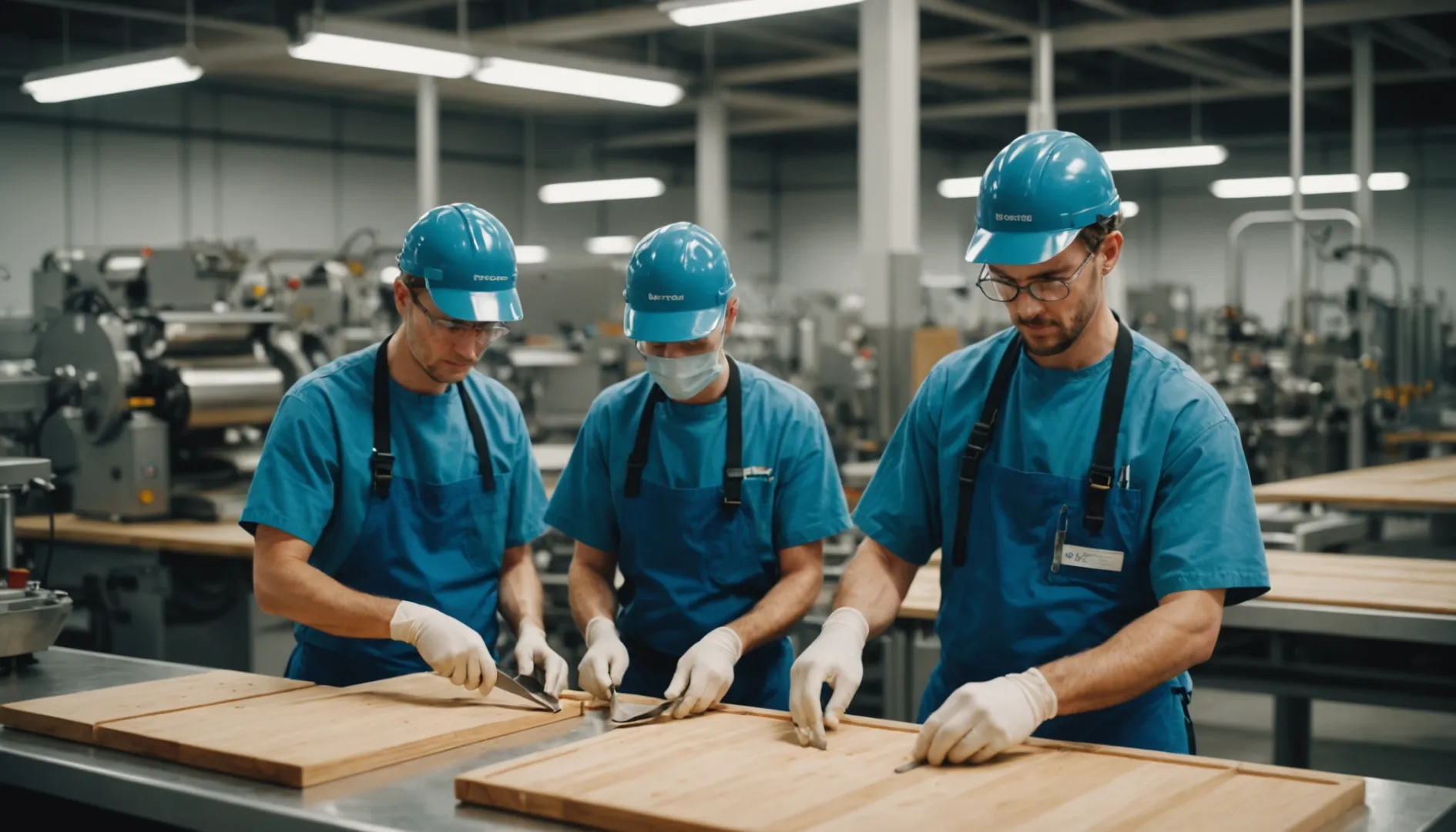
Understanding Key Compliance Certifications
Imagine stepping into a maze without a map. That's how navigating compliance felt to me at first. With so many paths and turns, it seemed impossible to know where to start or what certifications were necessary. But as I delved deeper, I realized a few key certifications stood out as beacons, guiding me through the complex landscape of regulatory standards.
ISO 9001: Quality Management
Remember the first time you tried baking a cake? You followed a recipe to ensure everything turned out just right. ISO 9001 is like that recipe for businesses; it provides a framework ensuring they consistently meet customer and regulatory requirements. Achieving this certification not only streamlines processes but also enhances customer satisfaction—a must in any industry where quality is non-negotiable.
Explore more about ISO 900113 to understand how it can benefit businesses and what the certification process entails.
ISO 14001: Environmental Management
I recall my first attempt at a sustainable lifestyle—bringing reusable bags to the grocery store felt like a big step. For companies, ISO 14001 is that big step towards sustainability. It provides a framework for effective environmental management systems, helping organizations improve their performance through efficient resource use and waste reduction. This certification is essential for those in industries where environmental impact matters.
Learn about ISO 14001's impact on sustainability14 and how it supports long-term ecological goals.
Specialized Certifications in Health and Safety
FDA Food Safety Certification
I remember being fascinated by food production during a factory tour in school, marveling at the rigorous checks ensuring everything was safe for consumption. For industries involved in food production, the FDA offers specific certifications that enforce stringent manufacturing and sanitation protocols to keep consumers safe—a critical component of public health.
Understanding FDA's role in food safety15 can offer insights into how these regulations protect consumers.
OSHA Compliance Certification
My first summer job was at a construction site, where safety was paramount. This experience highlighted the importance of OSHA certifications, which ensure workplace safety by helping organizations comply with health and safety regulations. This certification is indispensable in sectors like construction.
Discover how OSHA certifications enhance workplace safety16 and ensure regulatory compliance.
Beyond the Basics: Industry-Specific Certifications
Different sectors often have unique challenges requiring specialized compliance certifications. I learned this firsthand when transitioning from a healthcare role, where HIPAA compliance was crucial, to finance, where anti-money laundering (AML) certifications became relevant.
Exploring industry-specific compliance needs17 can help professionals determine which certifications align with their career goals and regulatory requirements.
These certifications not only validate one's knowledge and skills but also enhance career opportunities by demonstrating a commitment to upholding industry standards.
Sustainable wood sourcing prevents chemical contamination.True
Sustainably sourced wood is often free from harmful chemicals.
ISO certification is unnecessary for cutlery manufacturers.False
ISO certification ensures adherence to health and safety standards.
Conclusion
Health and safety standards in disposable wooden cutlery production are upheld through sustainable sourcing, rigorous quality control, strict hygiene protocols, regular audits, and compliance with food safety regulations.
-
Learn how certified forests contribute to environmental conservation. ↩
-
Discover why compliance certifications are vital for quality assurance. ↩
-
Explore strategies to prevent supply chain interruptions effectively. ↩
-
Find out how technology boosts procurement efficiency. ↩
-
Understand the impact of fair trade on ethical sourcing. ↩
-
Explore the environmental benefits of sustainable sourcing in manufacturing. ↩
-
Learn how regular audits enhance safety and efficiency. ↩
-
Understand the significance of ISO certification for safety compliance. ↩
-
Discover why sanitation is crucial for product safety in food industries. ↩
-
Learn how compliance can enhance market opportunities and consumer trust. ↩
-
Explore effective training methods to enhance employee hygiene awareness. ↩
-
Understand how sanitation improves efficiency and profitability in production. ↩
-
Learn about quality management improvements with ISO 9001 certification. ↩
-
Discover how ISO 14001 aids in achieving environmental goals. ↩
-
Understand FDA's impact on ensuring safe food production. ↩
-
Find out how OSHA ensures a safer work environment. ↩
-
Explore compliance needs unique to various industries. ↩

